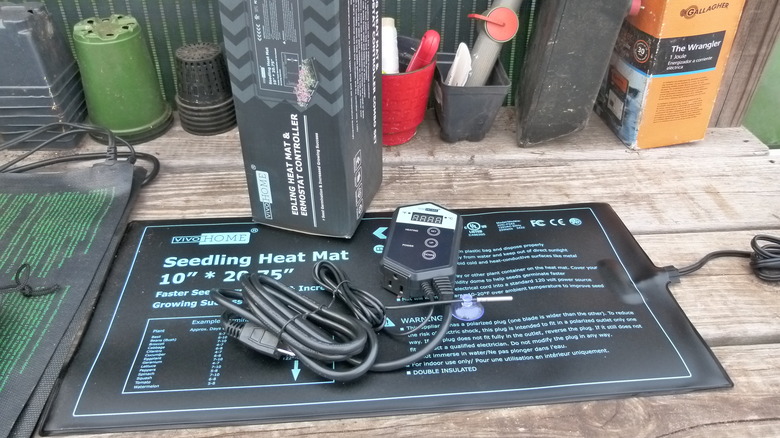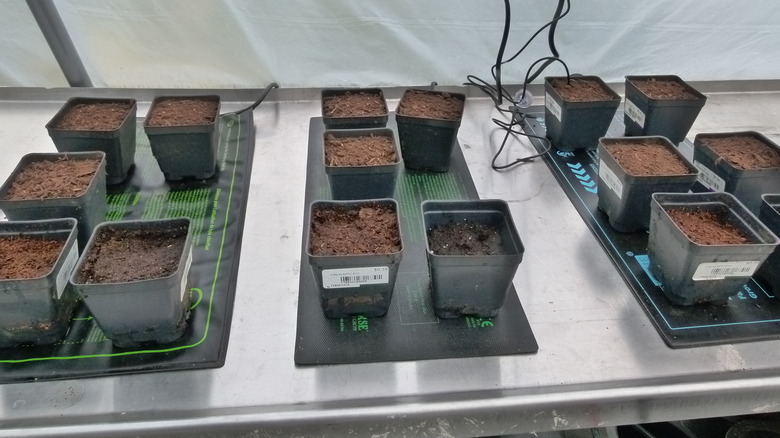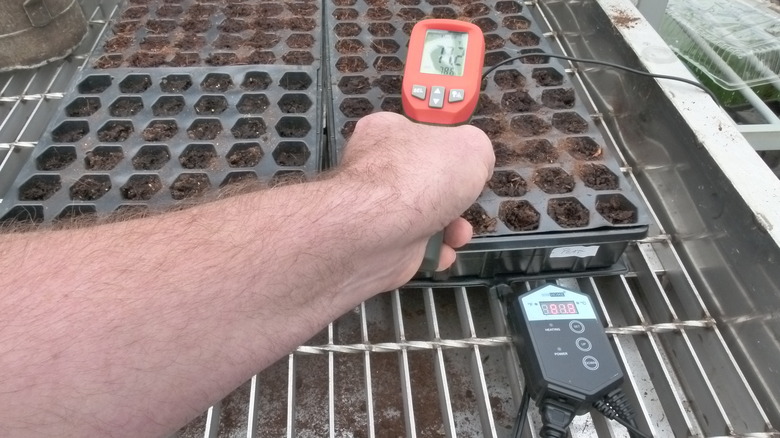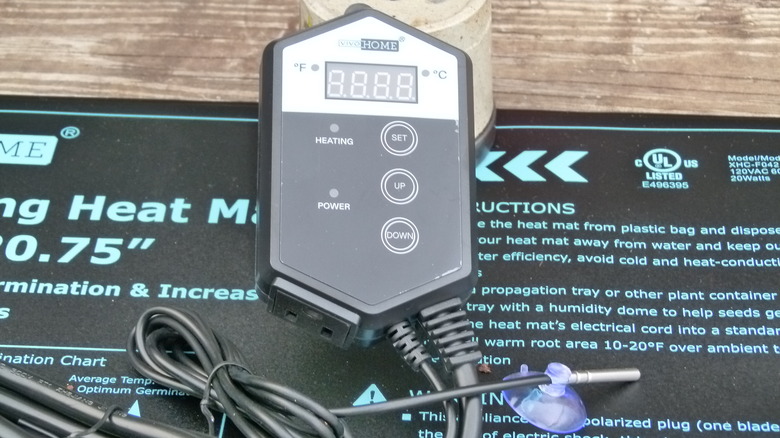We Used The Cheapest Seedling Heat Mat From Home Depot And It Left Us Feeling Warm And Fuzzy
We may receive a commission on purchases made from links.
In April of 2021, David Lowry sprouted some moth mullein seeds that had been buried in bottles on the Michigan State University campus in 1879. This presents a bit of a quandary for the home gardener. Is the lesson that seeds are super-durable and will do everything they possibly can to produce a plant, or that great success can be had growing plants if you have a university-sized staff, budget, and growth chamber? The gardening industry seems to prefer the latter and promotes products like seed-starting mats as one of the things you need to move closer to growth chambers, labs, and a moth mullein empire of your own.
Seed-starting mats are generally designed to increase the temperature of trays of seed-starting "soil," thereby making the germination of your seeds faster and more likely. Their only downside is that blindly applying heat to seeds (and, well, most things) might result in the death of the plant. This is unfortunate in the case of your favorite tomato plants and downright tragic in the case of mullein, which has a comically long list of supposed health benefits that include improvement in whooping cough, tuberculosis, pneumonia, gastrointestinal bleeding, and herpes.
Thermostat-controlled heat mats claim to eliminate the overheating problem by brilliantly preventing them from overheating. The benefits of mullein might be unproven and overstated, but what about the benefits of a temperature-controlled seed-starting mat?
Pitting VivoHome against its rivals
As any reasonable person would, we turned to Home Depot for answers. We concentrated hard as if we were using a Magic 8 Ball. "The cheaper, the better," we concentrated ... though this was probably assumed anyway. Who has paying more as a goal? To which Home Depot replied: "Try the VivoHome Seedling Heat Mat and Thermostat Controller Set for a mere $39.99." The set includes a heat mat, thermostatic controller, and probe for determining the soil's temperature. "Is this going to work?" we concentrated on the Home Depot website. "Concentrate and ask again," it replied.
Instead, we decided to test it for ourselves. The purpose of a seed-starting heat mat is to increase the temperature about the amount needed to bring cooler indoor spaces up to the ideal 75-ish degrees preferred by many plants. (We're using degrees Fahrenheit for this discussion. Don't try to start seeds at 75 degrees Celcius.) For such a mat to succeed, it would need to do that and shut off once the target temperature is reached. It should also heat the soil evenly all along its surface.
We had a couple of seed mats without thermostats (branded Seedfactor and Ferry-Morse) left from past batches of tomatoes, peppers, basil, and other plants that benefit from extra-warm seeds, so we tested them alongside VivoHome's thermostat model. The distinction is key; without thermostats to shut them off, heat mats just keep applying whatever heat they can produce.
Making sense of seed-starting mat performance
Our early results were difficult to decipher. Left to run amok for a few hours in a hot, unventilated section of the greenhouse, the VivoHome did appear to protect against overheating. Set to 90 degrees, the average soil temperature on the VivoHome was 97.3, while the Seedfactor and Ferry-Morse averaged 116.3 and 117.2, respectively. But when we increased the thermostat to its max (108 degrees, which happens to be the temperature at which heat starts to destroy some seeds), the VivoHome was decidedly middle-of-the-pack. Even without thermostats, the unregulated mats were closer to the target temperature half the time. Our results seemed unpredictable.
We were concerned that the stainless steel table we were using dissipated too much heat, so we re-staged the experiment using a stainless steel grate with far less contact with the mat. We also just compared it to the Ferry-Morse mat, which seemed to perform better than the Seedfactor. Things started to make sense almost immediately. After three hours, the VivoHome was 6.45 degrees closer to the target temperature than the Ferry-Morse. We increased the target by 10 degrees and took measurements an hour later, finding an overage 3.1 degrees difference and the VivoHome almost spot on the target temperature.
To check the mat for even heating, we took eight measurements of the mat's surface temperature in a grid. The temperatures closest to the electrical cord were around 9 degrees warmer than the opposite end.
Recommending the VivoHome seed mat/thermostat ... for some purposes
The conventional wisdom is that you need soil, light, water, and heat for germinating seeds. Soil is mostly right, although a sterile medium is better. And many seeds germinate better with no light whatsoever. But seeds need moisture and a minimum temperature that varies from 68 to 86 degrees. Most plants benefit from being around 10 degrees warmer than the average home. So, will this $40 accessory help you achieve this goal?
It probably will, and it will certainly offer some protection for your seeds. It does not appear to do the job much better than an unregulated heat mat, except that it stalls runaway temperatures before they are damaging ... exactly its purpose. You might expect, as the fortuitously named Joe Gardener does, that a regulated heat mat will help you reach the temperature you set, but that's expressly not what this device is designed to do. It only intends to keep your seed trays from overheating. In these tests and an additional one using frozen soil, the VivoHome thermostat proved to be accurate, and while the mat itself tended to heat unevenly, this thermostat is compatible with other mats, which might be worth trying.
The price seems a little high, but ultimately that's a function of performance. Will it help you grow enough extra plants to offset the cost? If you're growing cabbage with an almost 100% germination rate, it's unnecessary. But using the seed mat with more heat-loving crops or finicky seeds could pay for itself quickly.



